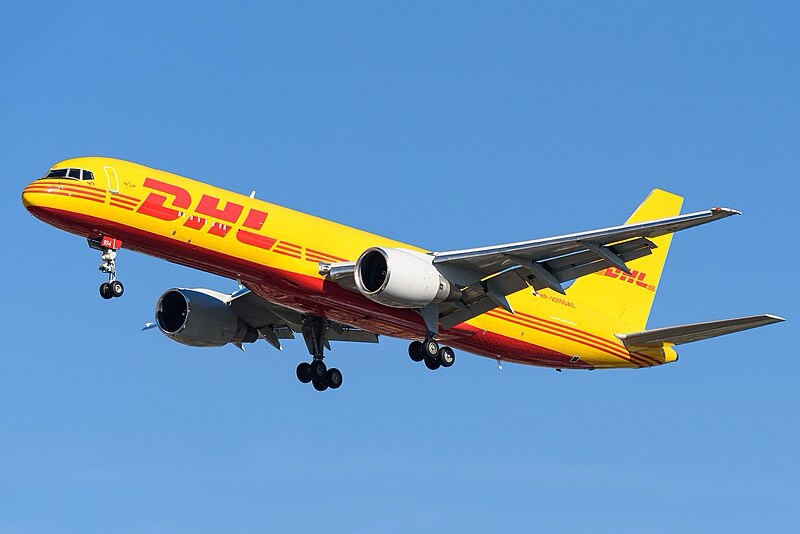
DHL Cargo Plane Skids Off Runway and Breaks Apart During Emergency Landing in Costa Rica
DHL Cargo Plane Skids Off Runway and Breaks Apart During Emergency Landing in Costa Rica
A terrifying aviation incident unfolded on April 7, 2022, when a Boeing 757-200 cargo aircraft operated by DHL Aero Expreso skidded off the runway and broke apart following an emergency landing at Juan Santamaría International Airport in San José, Costa Rica. While the two crew members on board survived without serious injuries, the dramatic accident led to significant disruptions at one of Central America’s busiest airports and raised concerns about aviation safety and emergency response protocols.
The incident, which was captured on video, shocked aviation experts and the general public alike. The aircraft, designed to transport cargo rather than passengers, suffered a structural failure upon landing, splitting into multiple pieces and causing an immediate response from emergency personnel. Authorities are now investigating the causes behind the accident, seeking to determine whether mechanical failure, pilot error, or environmental conditions played a role in the crash.
The Incident: A Harrowing Landing Gone Wrong
DHL Aero Expreso Flight 758 was a routine cargo flight departing from Juan Santamaría International Airport in Costa Rica, heading to Guatemala City. Shortly after takeoff, the pilots reported hydraulic system issues and requested permission to return to the airport for an emergency landing.
As the aircraft approached the runway, everything seemed under control. However, upon touching down, the pilots struggled to maintain control of the plane. The aircraft veered off the runway, skidding uncontrollably before breaking apart near a grassy area adjacent to the airstrip. The tail section detached completely, while the fuselage suffered severe structural damage.

Fortunately, emergency response teams were already on high alert, given the advance warning of the emergency landing. Firefighters and airport personnel quickly arrived at the scene, helping the pilots evacuate safely. Both crew members were evaluated by medical staff and found to have sustained only minor injuries.
Possible Causes: What Went Wrong?
Investigators from Costa Rica’s civil aviation authority, along with representatives from DHL and Boeing, are working to determine the root cause of the accident. Several factors could have contributed to the emergency landing and the subsequent runway excursion:
1. Hydraulic System Failure: The crew’s initial report of hydraulic issues suggests that a failure in the aircraft’s hydraulic controls may have affected braking, steering, or landing gear deployment. Hydraulic systems are critical for maneuverability, and any malfunction can lead to difficulty in controlling the aircraft on landing.
2. Weather Conditions: While there were no reports of extreme weather at the time, wet or slippery runway conditions can make it harder for aircraft to slow down effectively. Investigators will analyze weather data to determine whether rain, wind, or other environmental factors played a role.
3. Pilot Handling: Although the pilots followed emergency procedures and made the correct decision to return, investigators will also review whether any pilot actions contributed to the severity of the landing. Emergency landings require precise execution, and any miscalculations in speed, descent angle, or braking could exacerbate the situation.
4. Aircraft Maintenance Issues: The Boeing 757-200 is a reliable aircraft, but like any machine, it requires routine maintenance. Investigators will inspect the aircraft’s maintenance records to determine if any unresolved mechanical issues may have led to the hydraulic failure.
Emergency Response and Airport Impact
The swift action of emergency responders helped prevent a worse outcome. Airport fire crews arrived within minutes, ensuring that the situation remained under control and that the crew members were safely evacuated. Despite the severity of the accident, no fire broke out, minimizing further risks.

However, the incident caused significant disruptions at Juan Santamaría International Airport. The main runway was temporarily closed, leading to delays and flight diversions. Airport authorities worked quickly to clear the wreckage, but operations remained affected for several hours.
In the wake of the accident, Costa Rican authorities conducted a full review of airport emergency procedures. While the response was handled efficiently, the event served as a reminder of the importance of preparedness for unexpected aviation emergencies.
DHL Aero Expreso and Boeing 757-200: Safety Record
DHL Aero Expreso, a Panama-based cargo airline, has generally maintained a solid safety record. The airline operates a fleet of Boeing aircraft to transport goods across Latin America and beyond. This incident, however, marks one of the most severe accidents in the airline’s history.
The Boeing 757-200, first introduced in the 1980s, is widely regarded as a reliable aircraft for both passenger and cargo operations. With a strong safety history, the model has been used extensively by airlines and logistics companies worldwide. While the aircraft involved in this crash suffered catastrophic damage, its overall design remains one of the most durable in the industry.
Lessons and Future Safety Measures
The DHL Flight 758 accident underscores the importance of robust maintenance, pilot training, and emergency preparedness. While aviation technology has made flying safer than ever, unexpected failures can still occur, requiring quick thinking and precise execution from flight crews.
To prevent similar incidents in the future, authorities and airlines may consider implementing the following measures:
1. Enhanced Aircraft Maintenance Protocols: A thorough review of hydraulic system maintenance procedures could help detect potential issues before they lead to in-flight failures.
2. Emergency Landing Training: While pilots regularly undergo emergency scenario training, additional simulation exercises focused on hydraulic failures and runway excursions may improve responses in critical situations.
3. Improved Runway Safety Infrastructure: Airports can assess whether additional safety barriers, improved drainage systems, or extended runways could minimize the risk of aircraft skidding off the runway in emergency landings.
4. Real-Time Monitoring Systems: The use of advanced aircraft health monitoring systems can help detect mechanical issues earlier, allowing for preventive maintenance before takeoff.

Conclusion: A Close Call with a Fortunate Outcome
The incident involving DHL Flight 758 at Juan Santamaría International Airport could have ended in tragedy, but thanks to the skill of the pilots and the rapid response of emergency teams, all personnel on board survived. The dramatic footage of the aircraft skidding off the runway and breaking apart serves as a stark reminder of the challenges pilots face during emergency situations.
While the investigation continues, the aviation industry will undoubtedly learn valuable lessons from this accident. Ensuring that aircraft undergo rigorous maintenance, pilots receive extensive emergency training, and airports have optimal safety measures in place will be critical in preventing similar incidents in the future.
Ultimately, the DHL Flight 758 emergency landing highlights both the vulnerabilities and strengths of modern aviation. Despite the risks, the industry’s commitment to safety ensures that even in the face of unexpected challenges, lives can be saved, and disasters can be averted.


